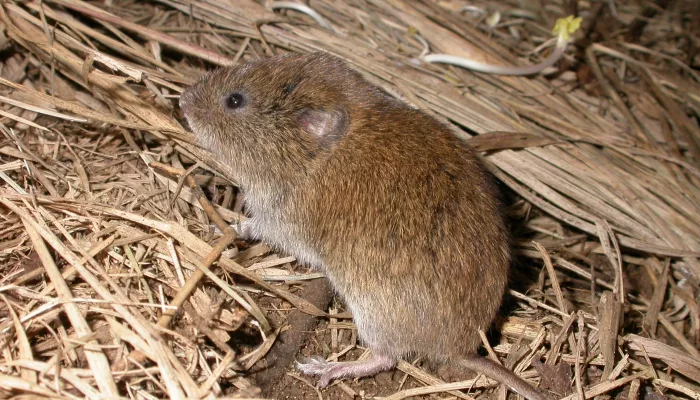About
The field vole (also known as the short-tailed vole) is very common in grassland, heathland and moorland habitats. It is active day and night and eats seeds, roots and leaves. Further up the food chain, it forms an extremely important part of the diet of many predators, such as kestrels, weasels and barn owls. Field voles are not great climbers, preferring to move along the ground through a network of well-used runs that lead to their burrows. They can produce three to six litters of up to seven young a year, and undergo population booms every few years. These increases don't last long, however, as they have short lifespans and fall prey to other animals.
How to identify
The field vole is grey-brown above, and pale grey below. It has shaggier fur than the similar bank vole and a proportionally shorter tail (less than 30% of its body length). Voles have blunter, rounder faces, smaller ears and eyes, and shorter tails than mice.
Did you know?
During the breeding season, male field voles produce a musky and unpleasant smell. They will defend their territories fiercely, squeaking loudly and fighting, often to the death.

